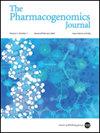Network pharmacology prediction, molecular docking and in vitro experiment explored the potential mechanism of Gaoyuan’an capsule in improving hypoxia tolerance
IF 2.9
3区 医学
Q2 GENETICS & HEREDITY
引用次数: 0
Abstract
Tibetan medicine Gaoyuan’an capsule (GYAC) is widely used to prevent pulmonary edema at high altitude, but the specific mechanism has not been explored. In this study, we analyzed the mechanism of GYAC in hypoxia tolerance, and provided a new idea for the prevention and treatment of altitude disease. The effective components and corresponding targets of GYAC were screened out by the Chinese herbal medicine network database, and the key targets of hypoxia tolerance were retrieved by Genecards, OMIM and PubMed database. Cytoscape 3.7.2 was used to construct GYAC ingredient-target-hypoxia tolerance-related target network. GO function annotation and KEGG enrichment analysis were performed to predict the pathways in which target genes may be involved, and molecular docking was used to verify the binding ability of the compound to target genes. In vitro, the above results were further verified by molecular experiment. We found that GYAC can improve hypoxia tolerance by regulating various target genes, including IL6, IFNG, etc. The main regulatory pathways were HIF-1 signaling pathway. Molecular docking showed that the affinity between luteolin and target genes (IL6, IFNG) were better. In vitro, we observed that hypoxia can inhibit cell viability and promote apoptosis of H9C2 cell. And hypoxia can promote the expression of LDH. After the addition of luteolin, the decrease of cell viability, the increase of cell apoptosis, LDH release and the decrease of mitochondrial membrane potential were inhibited. Besides, inflammatory related factors (IL-6, IL-10, IL-2, IFNG and VEGFA) expression were also inhibited hypoxic cell models. The results of network pharmacology and molecular docking showed that luteolin, a monomeric component of GYAC, played a role in hypoxia tolerance through a variety of target genes, such as IL6, IFNG. What’s more, we have discovered that luteolin can reduce the inflammatory response in cardiac myocytes, thereby alleviating mitochondrial damage, and ultimately enhancing the hypoxia tolerance of H9C2 cardiomyocytes.


网络药理学预测、分子对接和体外实验探索高元安胶囊改善缺氧耐受性的潜在机制
背景藏药高原安胶囊(GYAC)被广泛用于预防高原肺水肿,但其具体机制尚未探明。方法通过中药网络数据库筛选出高原安胶囊的有效成分及相应靶点,并通过Genecards、OMIM和PubMed数据库检索到耐缺氧的关键靶点。利用Cytoscape 3.7.2构建了GYAC成分-靶标-耐缺氧相关靶标网络。通过 GO 功能注释和 KEGG 富集分析预测了靶基因可能参与的通路,并通过分子对接验证了化合物与靶基因的结合能力。结果我们发现 GYAC 可通过调控 IL6、IFNG 等多个靶基因来改善缺氧耐受性。主要调控途径为 HIF-1 信号通路。分子对接显示,木犀草素与靶基因(IL6、IFNG)的亲和力较好。在体外,我们观察到缺氧能抑制 H9C2 细胞的活力并促进其凋亡。缺氧可促进 LDH 的表达。添加叶黄素后,细胞活力的降低、细胞凋亡的增加、LDH 的释放和线粒体膜电位的降低均受到抑制。结论 网络药理学和分子对接的结果表明,GYAC 的单体成分叶黄素通过多种靶基因(如 IL6、IFNG)在耐缺氧过程中发挥作用。此外,我们还发现,木犀草素能减轻心肌细胞的炎症反应,从而减轻线粒体损伤,最终提高H9C2心肌细胞的耐缺氧能力。
本文章由计算机程序翻译,如有差异,请以英文原文为准。
求助全文
约1分钟内获得全文
求助全文
来源期刊

Pharmacogenomics Journal
医学-药学
CiteScore
7.20
自引率
0.00%
发文量
35
审稿时长
6-12 weeks
期刊介绍:
The Pharmacogenomics Journal is a print and electronic journal, which is dedicated to the rapid publication of original research on pharmacogenomics and its clinical applications.
Key areas of coverage include:
Personalized medicine
Effects of genetic variability on drug toxicity and efficacy
Identification and functional characterization of polymorphisms relevant to drug action
Pharmacodynamic and pharmacokinetic variations and drug efficacy
Integration of new developments in the genome project and proteomics into clinical medicine, pharmacology, and therapeutics
Clinical applications of genomic science
Identification of novel genomic targets for drug development
Potential benefits of pharmacogenomics.
 求助内容:
求助内容: 应助结果提醒方式:
应助结果提醒方式:


